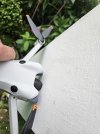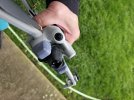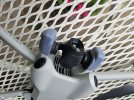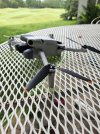So am trying to find the best ways to minimize our drones from hitting obstacles during Night Flying
I admit paying attention how you fly and having a second hand monitoring your drone while in the air is the best approach,
But I want to add even additional protection to my drones, so if i add something like the Lume Cube, or This or that will it be bright enough in extreme dark situations (or poor street lights) to light up and make obstacle avoidance work at night ? any idea how bright it should be ? any idea on a product which can light up in all 4 directions (back,front and sides) for a drone ?
thanks,
I admit paying attention how you fly and having a second hand monitoring your drone while in the air is the best approach,
But I want to add even additional protection to my drones, so if i add something like the Lume Cube, or This or that will it be bright enough in extreme dark situations (or poor street lights) to light up and make obstacle avoidance work at night ? any idea how bright it should be ? any idea on a product which can light up in all 4 directions (back,front and sides) for a drone ?
thanks,
















